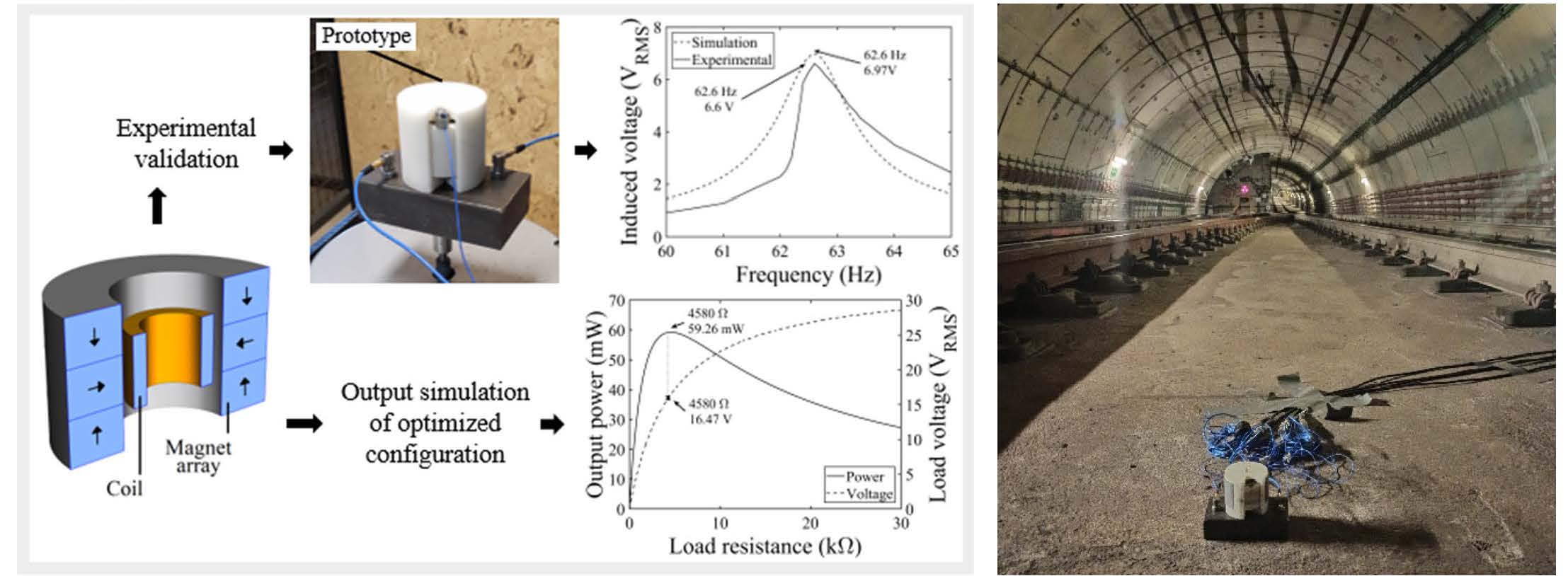Vibration energy harvesting

Description of the topic
The recent progress made in ultra-low-power devices like wireless sensor networks for structural health monitoring, which are primarily battery-powered, has increased the interest of industries for substituting batteries with other power systems with non-hazardous disposal, non-periodical replacement, and low-maintenance as offered by the vibration energy harvesting systems. These technologies transform kinetic energy from vibrations into electrical energy by means of an electromagnetic, piezoelectric or electrostatic transducer mechanism. Mechanical vibration is the most common type of mechanical energy for harvesting. It is ubiquitous in built and natural environments and is not affected by radio wave, solar or thermal conditions. Manmade sources of mechanical energy (e.g., machinery, infrastructures, and transportation) can emit high levels of harmonic vibrations or low levels of random vibrations, these last ones being challenging to harvest efficiently. Moreover, natural mechanical energy is usually related to vibrations induced by wind or water flow.
Developments at the LEAM
At LEAM, we are working on the design, development and improvement of electromagnetic vibration energy harvesting technologies. For these aims, analytical, numerical and experimental methods are used to understand the physical behavior of these type of electromechanical systems, perform different simulations of uncoupled and coupled systems, and execute different laboratory and field tests, respectively. The following is a list of topics that are studied at the moment at LEAM:
- Design, optimization and testing of a high-performance electromagnetic vibration energy harvester (EMVEH) based on Halbach magnet arrays (Fig. 1).
- Investigation of electromagnetic vibration energy harvesting on water distribution control valves (Fig. 2).
- Investigation of electromagnetic vibration energy harvesting for railway-induced vibrations (Fig. 3).
- Analysis of the influence of the electromagnetic coupling between the magnets, the springs and the environment for different electromagnetic vibration energy harvesting configurations.
- Study of the mechanical transmissibility and voltage response of different electromagnetic vibration energy harvesting configurations.
- Wideband and self-tuning electromagnetic vibration energy harvesters.



Share: